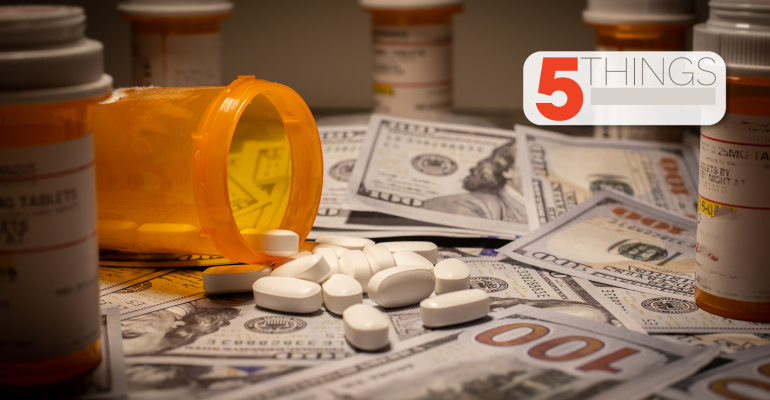Dropped like a hot potato: CPG companies, beware — some interesting moves are a- brewin overseas. France-based Carrefour, one of the world’s largest grocery chains, recently told customers that it plans to pull Lay’s, Doritos, Lipton Ice Tea and other PepsiCo products in protest of increased prices from those companies. The move comes as Europeans continue to face high food prices. France saw a 7% year-over-year increase in December. On the other side of the pond, U.S. inflation has cooled fairly steadily since hitting a four-decade high of 9.1% in mid-2022. But have we seen the end? And if inflation rises here in the states again, will grocers follow in the footsteps of France? We shall see. —Chloe Riley
Please insert card here: Costco shoppers will soon have to get used to a new ritual. The warehouse giant has a pilot in place that involves shoppers inserting their membership cards in kiosks at the entrance before they attempt to get their hands on the latest Costco finds. Currently, employees check membership cards at the door. A store in Issaquah, Wash., has the new system in place, and a Costco spokesperson tells Supermarket News that even more stores are piloting the kiosks (though they wouldn’t say which ones). Over the summer, Costco laid down a new law regarding membership cards in the self-checkout line — all shoppers must now show a legal I.D. that matches the info on the membership card. Members can also expect an increase in annual dues coming soon, but Costco execs have not announced a date. It’s OK, though, because the cost of the world famous hot dog meal remains untouched. Members, rejoice! —Bill Wilson
Who is CVS’ drug price revamp good for? Not necessarily consumers, according to this piece of reporting from CNN Business. Earlier this month, the company announced plans to make its drug pricing system simpler and more transparent. But that may not translate into lower costs or more clarity for consumers. The retailer’s new CVS CostVantage model is supposed to revamp how its pharmacies are paid for prescription medications. But CVS CostVantage will not directly affect patients buying drugs at the pharmacy counter. Rather, the arrangement is between CVS Pharmacy and the pharmacy benefit managers and payors, including insurers and employers that provide coverage to Americans. Savings will be passed along to the PBMs and payors, and ultimately it’s up to them to decide how much they’ll pass along to their members. Exactly how much of that savings translates to consumers remains to be seen. —CR
Inflation’s impact: Inflation has famously impacted Americans since the beginning of the COVID pandemic, but just how much is it affecting people in the grocery aisles, and how long will it continue? According to Bloomberg, grocery prices are up 25% since January 2020, while hourly wages have “barely budged” — and even those who have had big pay increases in that time are barely better off. One pound of ground beef is $5.23, up from $3.89 in January 2020. Coffee is up $2 per pound, fresh produce is up 14%, and at one point eggs were triple their pre-pandemic price. Now, inflation is slowing — grocery inflation is expected to be less than 2% next year, but a return to pre-pandemic pricing doesn’t seem to be in the cards. And going into an election year, that could affect more than just a family’s grocery bill: An October poll from Bloomberg New/Morning Consult showed that more than half of voters in swing states say groceries are the main way they’re impacted by inflation. —Leigh Anne Zinsmeister
Enter the Grocerant: So-called Grocerants — a hybrid of grocery stores and restaurants — are not a new thing, but the concept is growing in popularity, according to grocery industry analyst Phil Lempert, who recently discussed the topic with the Miami Herald. Lempert told the newspaper that prior to the pandemic, nearly a third of grocery stores across the country had a cafe of some sort, but that statistic dropped to roughly 10-15% during the era of social distancing and online grocery shopping. But in-store eateries are making a comeback, according to Lempert. “Over the past 12 months or so we have seen them re-opened and building momentum once again,” Lempert told the Herald. He said the trend is a direct challenge to stand-alone restaurants, particularly quick-serve restaurants like Chili’s. “The goal of the supermarket — especially those like Publix who pride themselves on quality and service — is to be shoppers’ No. 1 when it comes to all things food,” Lempert said in the article. —Timothy Inklebarger





